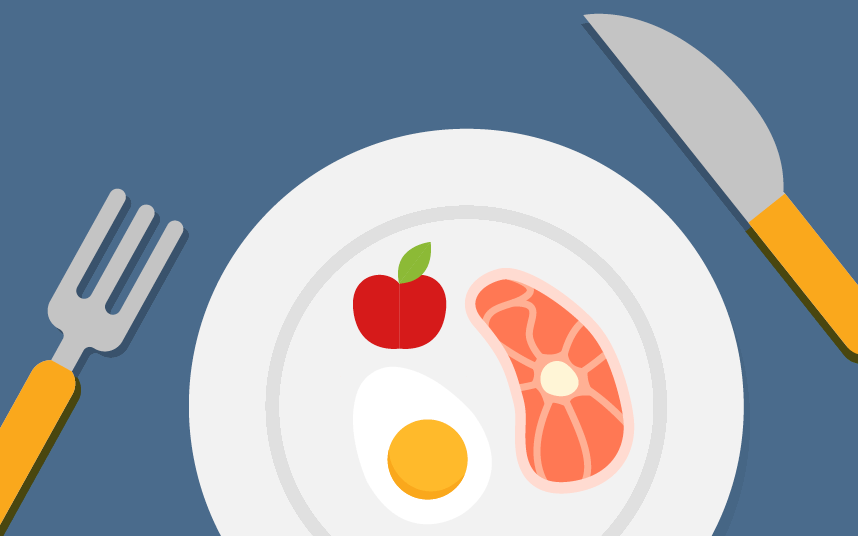
Paleo dieters enjoy a ‘back to basics’ food plan
As its name suggests, the principles behind the Paleo plan are routed in the Paleolithic era; the diet of our hunter-gathering ancestors.
The ‘back to basics’ food plan promotes the intake of wholesome, nutritious foods, but it’s also very restrictive, cutting out entire food groups.
What is the main purpose of a Paleo diet?
Out go processed foods such as cereals, grains, dairy, refined sugar and salt. Instead, the plan focuses on the intake of healthy fats from nuts, seeds, olive oil and grass-fed meat, and encourages dieters to fill up on eggs, fruit and vegetables.
The broad idea here is to eat ingredients that were available to humans during the Paleolithic era. In theory, we’ve evolved with these foods, so our bodies are well accustomed to dealing with them, in contrast to modern, processed foods.
What should I not eat on the Paleo diet?
Staying true to its origins, the diet plan omits anything our ancestors wouldn’t have had access to, as these foods are said to put a strain on our digestive system.
The Paleo diet, deconstructed
| Cut out | Allowed |
|---|---|
| Legumes and pulses (including peanuts) | Fruit |
| Cereal grains | Vegetables |
| Refined sugar | Grass-fed meat |
| Dairy | Fish |
| Processed foods | Nuts |
| Salt | Seeds |
| Refined vegetable oils | Olive oil |
Paleo dieters eat meat, eggs and fish, so they are likely to get enough protein to satisfy the recommended daily intake. However, cutting out dairy – a primary source of calcium and other important trace vitamins such as B2, B12, zinc and phosphorus – could be problematic.

There is also concern over the lack of whole grains in the diet plan. As an excellent source of fibre, wholegrains can go a long way to aiding healthy digestion and are also good for managing blood glucose levels and cholesterol.
What does a typical day on the Paleo diet look like?
“With the contemporary ‘Paleo Diet’ people are encouraged to avoid processed foods and to eat fresh, unadulterated foods,” says founder of The Paleo Diet movement, Dr Loren Cordain. Here, he outlines what a typical day looks like on the diet:
Breakfast:Scrambled eggs or a vegetable and salmon omelette with seasonal fresh fruit. Coffee, tea or freshly squeezed juice.
Lunch: Fresh garden vegetables, avocado and seafood (shrimp, crab, clam, mussels), salad dressed with lemon juice or vinegar and virgin olive oil. Mineral water, herbal tea or a glass of low sulphite wine.
Dinner: Any cut of beef, pork, lamb or fresh fish. Any fresh steamed vegetables (broccoli, cauliflower, sprouts, carrots). Fresh garden vegetable dinner salad. Wine, tea, mineral water. Fresh berries or fruit for dessert.
Why do people do the Paleo diet?
Weight loss
The exclusion of dairy, refined sugar and several forms of carbohydrates mean that, by default, Paleo dieters are cutting out many of the foods that contribute to weight gain.

To cut out processed foods
In line with the current healthy eating guides, the Paleo plan encourages dieters to increase the amount of fruit and vegetables they consume, while cutting back on processed foods.
What can I expect following a Paleo diet?
Alongside weight loss, some Paleo converts say they feel as though they have more energy. Chris Green, 30, works at a digital marketing agency and lives in Suffolk. He dropped two sizes after eight months following the Paleo diet plan.
While his primary goal was to lose weight, he recognised the benefits of cutting out refined sugar and processed foods and felt less sluggish while following a Paleo diet. “Not eating bread was the hardest part,” he says. “Being used to waking up to toast or cereal with milk meant that breakfast times were a challenge to begin with as both of these aren’t included in the diet plan. But egg and bacon for breakfast became quite enjoyable!”

“Noticing a few flu-like symptoms after a week into following the Paleo diet, I did some research and found that it was common to feel like that after cutting out simple carbs. Although I felt quite ill, I was proud I’d stuck to it so far.”
While his symptoms eased off after about a week, Chris still found the diet plan a challenge. “Even at the end of the eight months, cutting out carbohydrates and grains was challenging and I was having to eat a lot of green vegetables to feel full.”
What do the dietitians say about the Paleo diet?
“There are no superior benefits to the Paleo diet,” says Dietitian and Spokesperson for the British Dietetic Association Aisling Pigott. “It’s another name for a restrictive diet that may have short term results but doesn’t provide a balanced diet in the long term.”

Dieters, like Chris, often record feelings of increased energy after following the Paleo diet but Aisling puts this down to simply giving your diet an overhaul.
“Taking control of your eating choices has a positive psychological influence – we know that. The Paleo diet does encourage people to remove processed foods from their diet that’s very beneficial as they are high in sugar, salt and saturated fats.”
[“Source-telegraph”]
